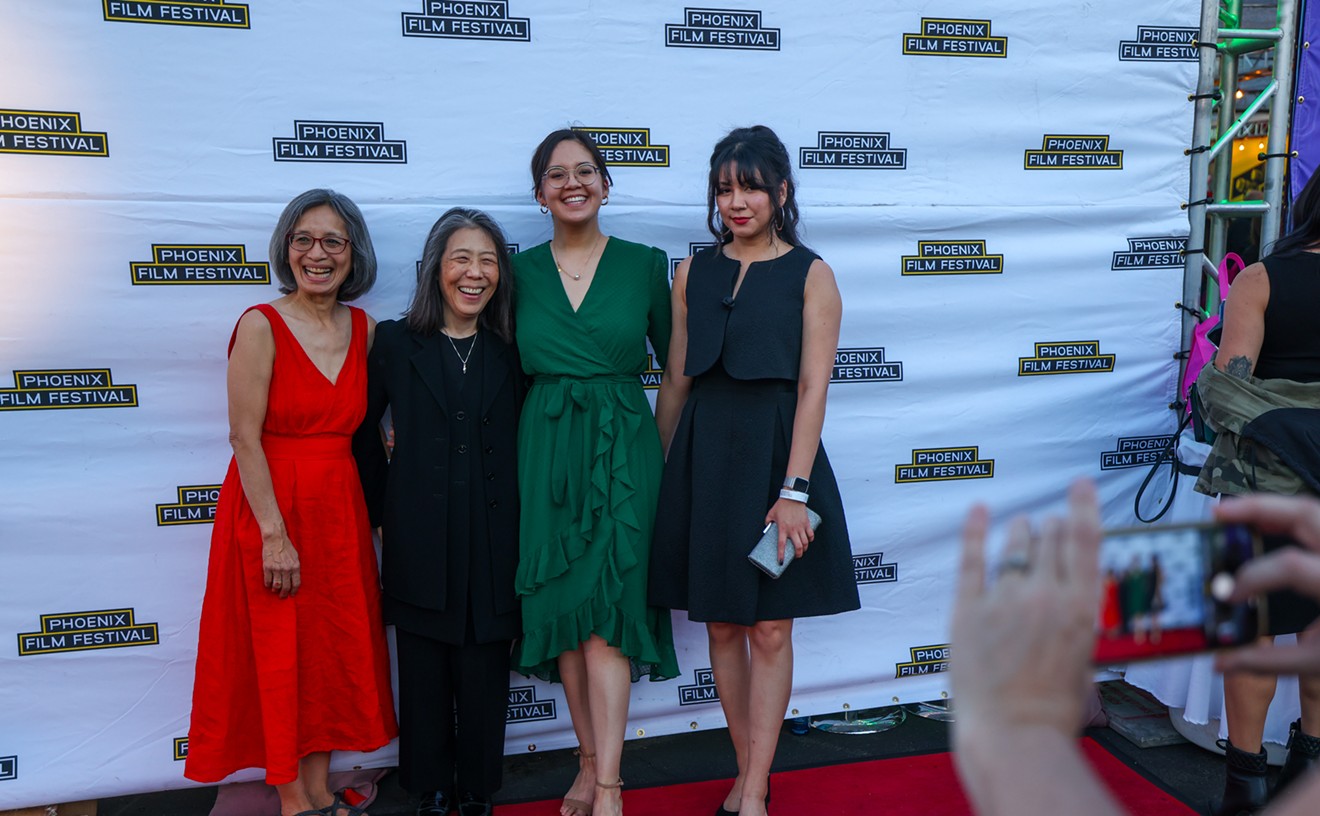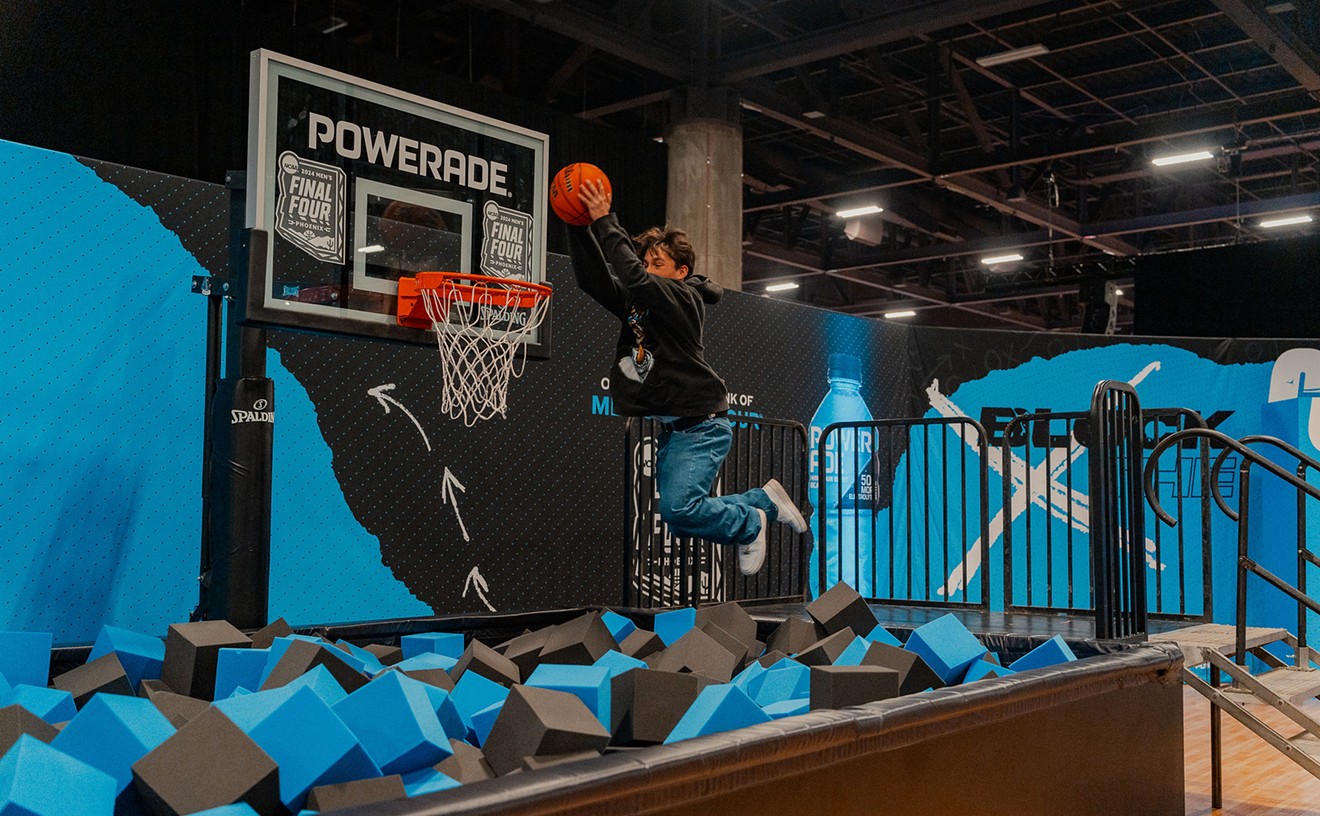Amid the ceaseless noise of nonsense from politicians and pundits comes a new art exhibition titled “Statement Piece,” a pairing of works by two ceramicists whose pieces are deceptively quiet yet speak volumes about America’s identity and reach. Curated by Garth Johnson, it’s currently on view at the ASU Art Museum's Ceramics Research Center in Tempe.
The exhibition features works by two socially engaged artists, each from a different generation. Unlike the flashy jewelry typically associated with the term “statement piece,” or the resounding shouts that mark rallies for various causes, these works tug quietly at the hearts and minds of those who see them.
Danish-born Erik Gronborg, 83, spent several years in a work camp for conscientious objectors before moving to the United States, where he’s best known to many for a series of functional pots addressing the Vietnam War. “Statement Piece” features more than 20 of his works, which convey through images and text the idiosyncrasies and contradictions prevalent in American culture.
Ehren Tool, the younger artist in this pairing, served in Operation Desert Storm after joining the U.S. Marine Corps during the early 1990s. Recently profiled for an episode of the PBS television program Craft in America, he’s best known for creating ceramic cups exploring the interface of military and civilian culture. “Statement Piece” features more than 120 of his cups, a 393-cup installation, and a digital video meant to serve as war memorial.
Johnson paired the artists due to “similarities in their work, and parallels in their personal histories.” Both “harness the power of images pressed into wet clay,” creating approachable, functional pottery steeped in social context. Both hold graduate degrees from the University of California at Berkeley.
“Statement Piece” is a thought-provoking variation on a theme — demonstrating America’s ongoing fascination with issues of war and peace. But it’s also a study in the ways these artists have incorporated their own moral compass into the larger conversation of a society steeped in an odd stew of anxiety, ambivalence, and apathy.
Gronborg offers cultural critique; Tool adds a call to action. By bringing them together, Johnson effectively explores the causes and effects of war on both a global and personal scale.
The exhibition comprises two contiguous spaces in the Ceramics Research Center. Stantions bearing images of the artists, which Johnson created using wheat paste, flank the point where viewers pass from one space to the next – signaling the continuum of the conversations created by these artists but also their shared sensibility.
Both artists reflect the cultural context that’s fueled American adventures in conquest and conflict. For Gronborg, it’s achieved through images including maps, currency, advertisements, naked women, weaponry, and various modern-day conveniences.
His 1969 glazed earthenware and lusters piece Discover America, which is part of the ASU Art Museum collection, incorporates one of his many recurring images: the Statue of Liberty surrounded by scaffolding as if to say America’s achievement of its own values is still a work in progress.
“Statement Piece” includes a video showing Gronborg making his ceramics, and a case filled with pieces he used to make imprints in his clay, but also the PBS Craft in America episode featuring Tool — in which the artist discusses his personal history, his views on war and peace, and his practice of making and giving away cups.
Tool’s work makes clear the impact of war on individual lives. His 2007 digital video titled The 1.5 Second War Memorial is an endless loop of Tool’s cups being shot, staged at 1.5-second intervals. Visitors hear the steady pulse of these shots throughout the exhibition space, even before encountering the video itself.
Exhibition materials note that each cup symbolizes a combat death. Watch for 3.7 minutes and you’ll see one broken cup for each death during the 1990 through 1991 Gulf War in which Tool served. It takes nearly 20 hours to memorialize combat deaths in Vietnam, and more than 120 hours to memorialize combat deaths in World War II, according to the accompanying text panel.
The video monitor is mounted next to Tool’s 393, a 2004 work made with stoneware, glaze, and wood in which each sepulchral black cup placed in neat formation represents a U.S. service member who died during the first year of the second Gulf War in Iraq. Each cup, like those in Tool’s video memorial, has been shot a single time with a pellet gun.
Each cup shows evidence of the impact. Some stay intact, but bear a small hole. Others break, but each in its own completely unique way — like the individuals they represent. Using a simple form, the cup shared between individuals throughout world cultures, Tool conveys the complexities of war and its lasting impact for individuals, families, and the world at large.
A final element of the exhibition — a row of more than 120 cups to which Tool has added photographs, quotations, and war-related imagery from bombs to skulls and crossbones — will change during the course of the exhibition. Cups that now line a single shelf in this exhibition space will be given away to veterans, says Johnson. Tool will make new cups to replace them.
During the past decade, Tool has given away more than 14,000 of his ceramic cups, saying he hopes they spark “conversations about unspeakable things.”
The ASU Art Museum notes that Tool will be in the Phoenix area, creating cups and speaking with both veterans and the general public, from Wednesday, September 9, to Friday, September 11. On the 11th, Tool will spend the day making cups at the Ceramics Research Center, which is located at the ASU Art Museum Brickyard. Members of the public are welcome to stop by and collaborate with Tool on creating their own handmade ceramic cup. A “Statement Piece” reception takes place that evening from 6:30 to 8:30 p.m.
“Statement Piece” continues at ASU Art Museum's Ceramic Research Center, located at 699 South Mill Avenue in Tempe, through Saturday, November 21. Find more information about the exhibition and exhibition-related programming for veterans and community members (as it is announced), on the ASU Art Museum website.











